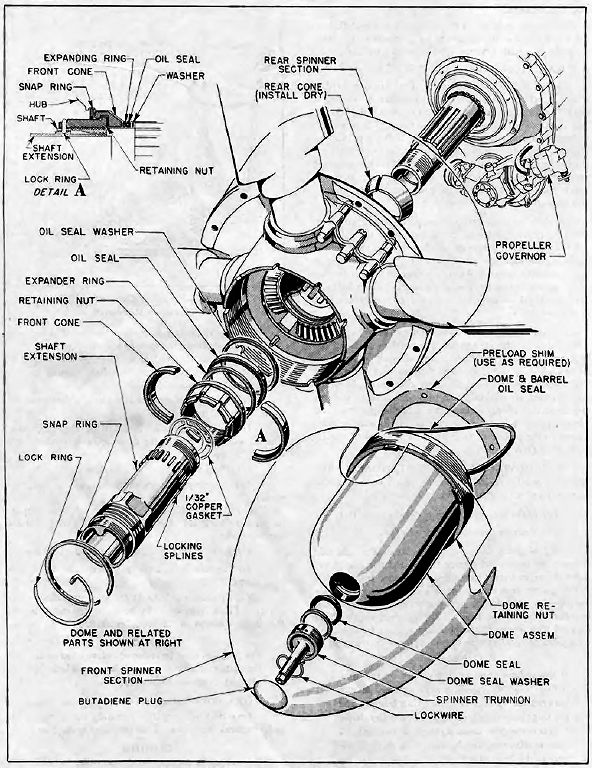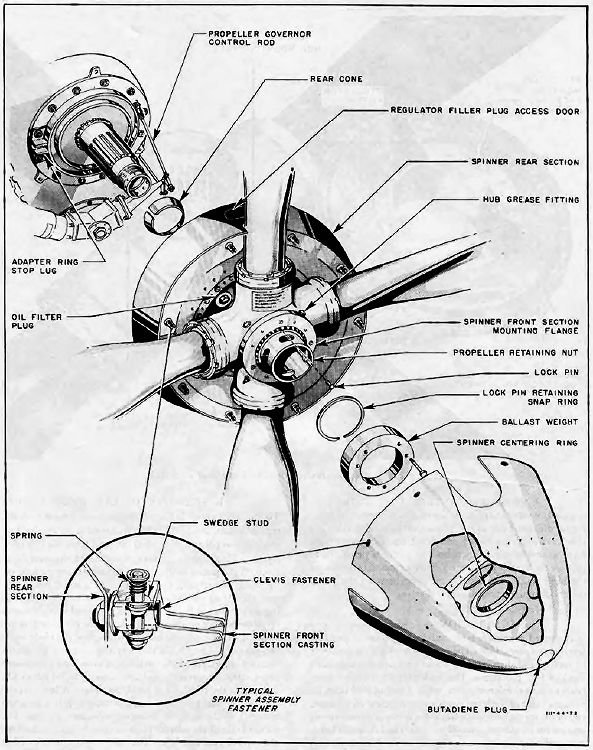P51K difference from P51D
Sun Dec 23, 2012 12:17 pm
Can someone tell me if there were any specifications differences between the D and K versions, or was it just a different manufacturer?
Re: P51K difference from P51D
Sun Dec 23, 2012 1:20 pm
"K"'s were built in Dallas by North American, not by another manufacturer. "D"'s were Built in California.
Many "K"'s also had Aeroproducts propellers since Hamilton Standard was having a rough time keeping up with the wartime demand. There may have been smaller modifications, so someone else might know those.
Jerry
Many "K"'s also had Aeroproducts propellers since Hamilton Standard was having a rough time keeping up with the wartime demand. There may have been smaller modifications, so someone else might know those.
Jerry
Re: P51K difference from P51D
Sun Dec 23, 2012 1:32 pm
The Dallas factory also built 'D' model Mustangs, I can see one from where I am sitting (and a California built Mustang if I look to the right)
Re: P51K difference from P51D
Sun Dec 23, 2012 2:56 pm
Unlike P-51B/C production, where the identical products had different designators based on place of manufacture, the Inglewood and Dallas plants both produced P-51D's. The only thing different between them was the suffix - for instance, an Inglewood-produced P-51D-10-NA was the equivalent to a Dallas-produced P-51D-10-NT. Both facilities had great demand for the Hamilton Standard propellers that were installed on the P-51D (and the B/C's before it), and Hamilton Standard wasn't able to keep up with demand (NAA, through both plants, could produce more P-51D's than propeller units could be provided). As a result, Aeroproducts was contracted to supply an alternative option for the Dallas plant. The Aeroproducts propellers required a new nose cone assembly to be designed and manufactured. This was the only production change from the P-51D, but it resulted in the new designator P-51K. From what I understand, the production of P-51K's was directly interwoven within the manufacture of P-51D's at the Dallas plant - for instance, within the P-51D-5-NT production block, there was a production block of P-51K-1-NT's, and within the P-51D-10-NT production block, there was a production block of P-51K-5-NT's. The difference in suffix was the result of the fact that full P-51D production started with the P-51D-5's (P-51D-1's were the few prototypes), while full P-51K production started with P-51K-1, thus the offset nature of the equivalent production block numbers.
The only other recognizable difference, although not intended, was in the canopy shape - with a different company supplying the canopies for the Dallas production, using a different production method, the canopies on the Dallas-produced P-51D's and P-51K's (both early and later design) took on a slightly different form to those produced for the Inglewood production, looking more 'slicked-back'.
There wasn't anything to prevent the nose cones/prop assemblies from being interchanged between P-51D's and P-51K's, and, based on available supplies, some P-51K's wound up being fitted with Hamilton Standard propellers while in operation.
Taken from the P-51D/K E&M, here is the only production difference between the two, clearly drawn:
Hamilton Standard propeller and nose cone:

Aeroproducts propeller and nose cone:

The only other recognizable difference, although not intended, was in the canopy shape - with a different company supplying the canopies for the Dallas production, using a different production method, the canopies on the Dallas-produced P-51D's and P-51K's (both early and later design) took on a slightly different form to those produced for the Inglewood production, looking more 'slicked-back'.
There wasn't anything to prevent the nose cones/prop assemblies from being interchanged between P-51D's and P-51K's, and, based on available supplies, some P-51K's wound up being fitted with Hamilton Standard propellers while in operation.
Taken from the P-51D/K E&M, here is the only production difference between the two, clearly drawn:
Hamilton Standard propeller and nose cone:

Aeroproducts propeller and nose cone:

Re: P51K difference from P51D
Sun Dec 23, 2012 3:06 pm
The same nose cone assembly was also used on the P-51H, though mounting the larger paddle-blade Aeroproducts blades. At this time, the only P-51 flying with a correct P-51K "needle blades" prop assembly is the P-51K "Fragile but Agile". There are at least two P-51D's ("Trusty Rusty" (PH-JAT) and "FF-704" (N6168C)) which operate with the same nose cone assembly, but sporting the P-51H paddle-blade props - a modification left over from their racing days.
Re: P51K difference from P51D
Sun Dec 23, 2012 3:19 pm
With FF-704 being damaged late last year and the prop totalled, maybe they'll replace it with a standard P-51D prop and nosecone.
Re: P51K difference from P51D
Sun Dec 23, 2012 5:29 pm
Thanks guys!
Re: P51K difference from P51D
Sun Dec 23, 2012 6:22 pm
Wasn't the big difference between AeroProducts props and Ham-Standards that the former were entirely self-contained and had their own oil supply and pump, versus using engine oil and engine oil pressure to control the prop pitch on the latter? Or is that only true on modern AeroProducts turboprop installations?
Re: P51K difference from P51D
Sun Dec 23, 2012 6:55 pm
Stephan Wilkinson wrote:Wasn't the big difference between AeroProducts props and Ham-Standards that the former were entirely self-contained and had their own oil supply and pump, versus using engine oil and engine oil pressure to control the prop pitch on the latter? Or is that only true on modern AeroProducts turboprop installations?
They are each very different in both construction and operation.
Aero Props are self contained in a sense, having oil and a pump internal in the prop assembly. The only connection is a linkage. Typically the blades are hollow steel.
The Ham Standard does use engine oil and an engine driven prop governor that incorporates a pump to boost engine oil pressure to operate the prop. Most blades are solid Alum but there are a few models with steel blades.
Aero Props have a sold hub and the blades are retained by a heavy nut that screws into the hub.
The Ham Std retains the blades with a 3 piece blade retention, an inner spider with axels the blade inserts on and then a 2 piece hub which bolts together retaining the blade.
Re: P51K difference from P51D
Mon Dec 24, 2012 1:36 am
There is another difference between the D & K, the shape of the air filter inlets on the side of the chin cowl. To my knowledge the backplate and spinner bodies are not interchangeable between an H and a K Aeroproducts prop. I will look in the books to confirm. The H blades are completely different in shape than the K. The H prop was used on the -9 in the H Model Mustang which was later in production than the D/K. If the H model saw service in WW2 it was very limited as it's first flight was Feb 3, 1945. However it was used in Korea along with the P-82's. The Aeroprops on the P-82 are completely different again as they are feathering props. Blades, hubs and all parts are different.
The reason the K props were removed from service in WW2 was that they proved to be unreliable. There is also one more airplane out there operating with an H prop. As far as Lewis Shaw's former airplane, it remains to be seen which prop will end up on it
The reason the K props were removed from service in WW2 was that they proved to be unreliable. There is also one more airplane out there operating with an H prop. As far as Lewis Shaw's former airplane, it remains to be seen which prop will end up on it
Re: P51K difference from P51D
Mon Dec 24, 2012 1:02 pm
Doesn't the engine have a plug in the propshaft for the Aeroproducts prop?
Re: P51K difference from P51D
Mon Dec 24, 2012 2:17 pm
bdk wrote:Doesn't the engine have a plug in the propshaft for the Aeroproducts prop?
Yup
leaks oil otherwise.
Bellcrank and bracket fit on the Prop Gov mounting pad along with a bracket that mounts on the nose case to match the stationary pump housing on the back of the prop regulator. On the image it is called the Adapter Ring Stop Lug.
Since the Aero Prop has its own internal pump to function there is a portion of the pump that is stationary. You spin the pump and mount the impeller so it stays still. This is possible as there is a finger that fits into the adapter ring lug.
There is also a lever on the stationary part that the control rod linkage bolts up to. This lever is connected to the prop control lever in the cockpit and is used to adjust engine RPM just like the Ham Std.
Re: P51K difference from P51D
Mon Dec 24, 2012 7:18 pm
Also IIRC the canopy on the P-51K had a slightly different profile with a pronounced bubble at the aft section.
Re: P51K difference from P51D
Mon Dec 24, 2012 9:16 pm
spiteful21k wrote:Also IIRC the canopy on the P-51K had a slightly different profile with a pronounced bubble at the aft section.
That probably differs for any block of production to another block.
The Canopy Blueprint shows several different dash numbers for different profiles. Some varied slightly but from one end of variation to the other I imagine it would be pretty evident.
Differences can be accounted for by who produced them and what period of time they were made.